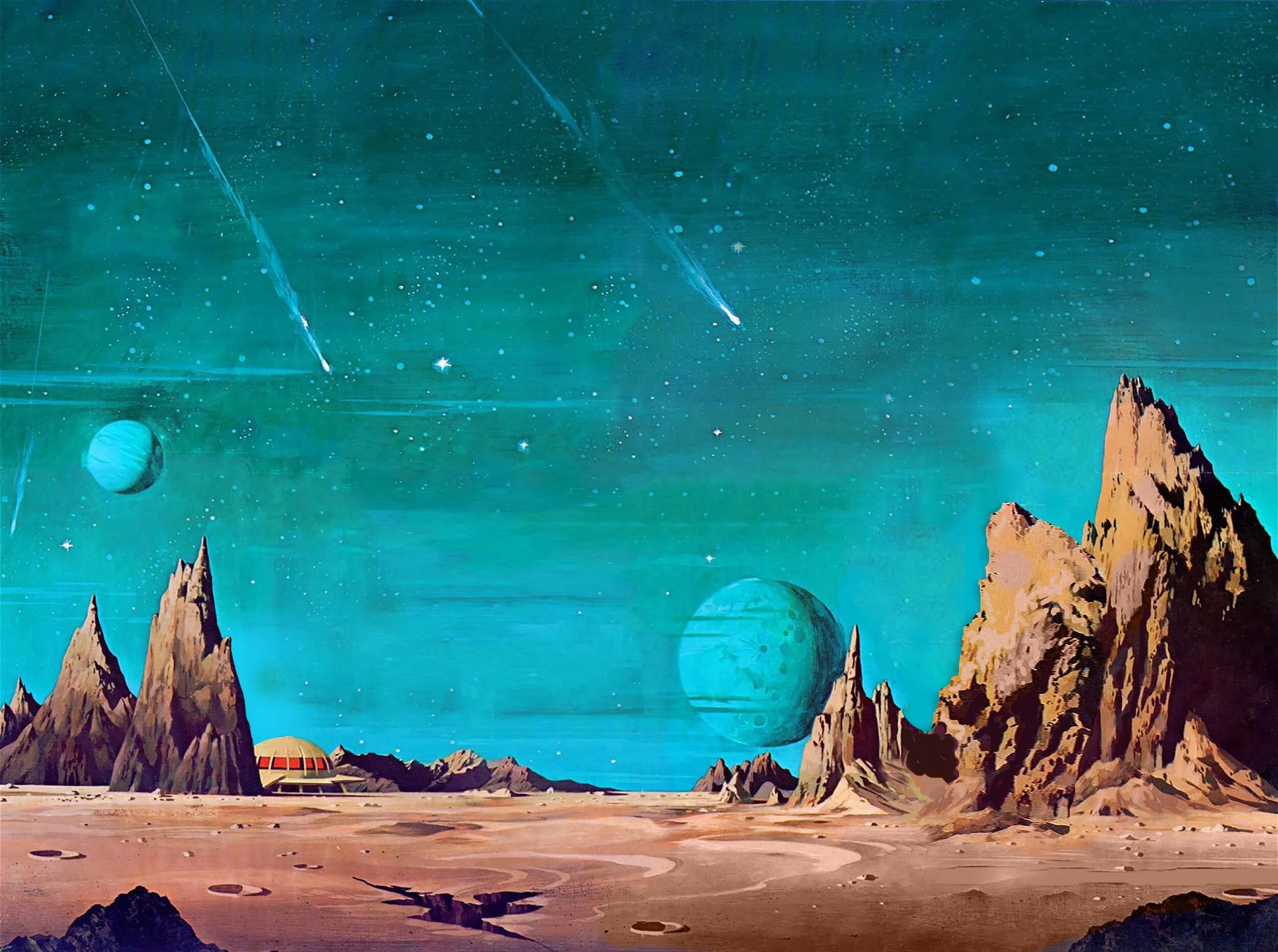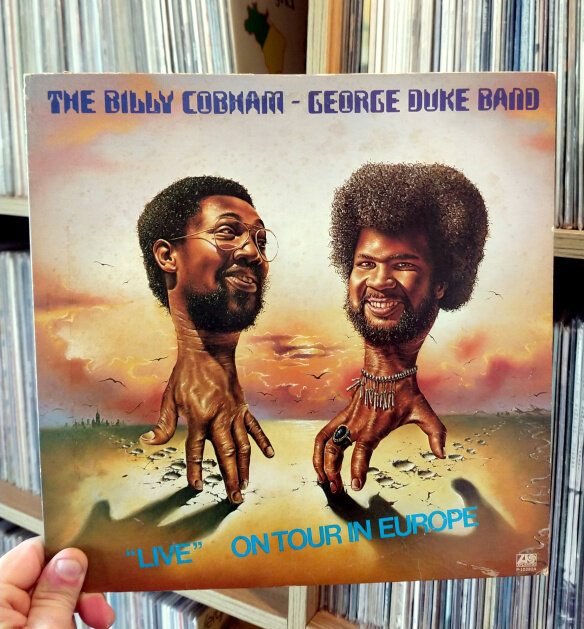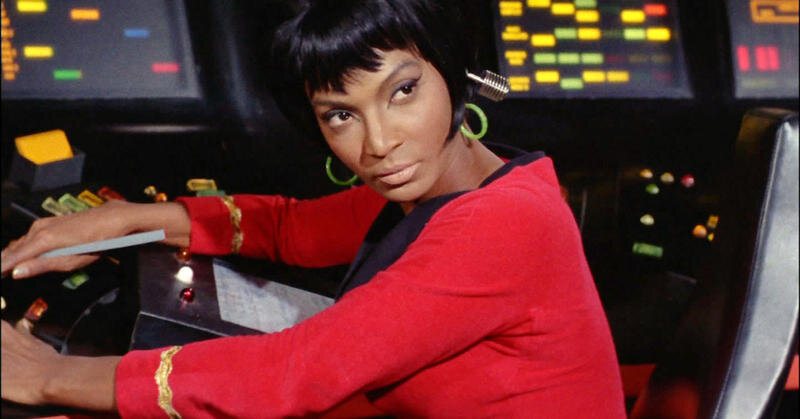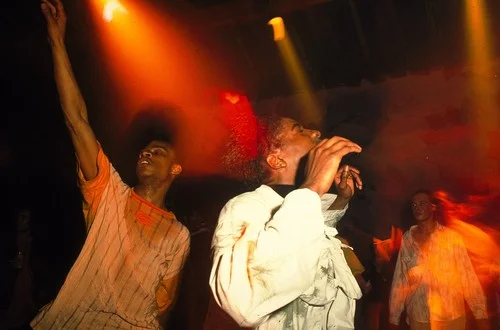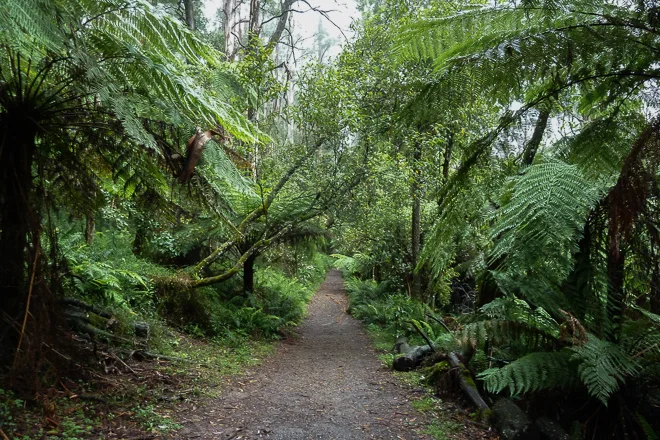TREATSCAST 06 - STAR JOURNEY
The Voyager Golden Record was originally sent into space in 1977. Featuring the ‘Sounds of Earth’, it left the solar system in 2012, and we have been enlarging our satellite dishes to pick up its far out signals ever since. Like many great records it was recently rereleased, and I wondered how these terrestrial sounds might be remixed and augmented by extra-terrestrials after absorbing the airwaves through our rich history of sci-fi and space themed music from around the world.
Over the expansive loneliness of lockdown, dealing with the death of my Father and feeling a million miles from home, I returned to this project. While steadily bingeing Star Trek: The Next Generation, with inspiration from some of the deep ambient and cosmic themed tracks I have collected over the years, it became a kind of loose history of unearthly music.
Thinking about where I first saw and heard sounds relating to other worlds, a lot of it was in kids shows like Button Moon and The Clangers. I had Vernon Eliott’s dialogue from the original series sitting on a hard drive for at least 10 years, and it finally fell into place on this mix.
(Video of the show here)
Instead of the sounds of the Clangers, I substituted the Klanging of Karlheinz Stockhausen, Edgard Varese, Sun Ra and other early sound explorers, along with Louis and Bebe Barron, who produced the first entirely electronic film score for The Forbidden Planet in 1956. (It’s so good that I sprinkled bits of it throughout the mix.)
Later my Dad introduced me to Doctor Who, and I fell in love with the sounds made by the BBC Radiophonic Workshop, which along with Glynis Jones included Delia Derbyshire, legendary pioneer of early electronic music. She produced the arrangement we hear on the original Doctor Who Theme music. However as it was Rob Grainer who wrote the original melody, she didn’t get a songwriting credit until the 50th anniversary of the show in 2013. Here she is in the studio, using tiny tape loops to create rhythms that had never been heard.
Delia Derbyshire
Other ‘electronica’ producers like Orbital have long cited her as an influence, and I have combined their live version of the Doctor Who theme with Delia’s original later in the mix, along with her iconic sound effect for the TARDIS (Time And Relative Dimension In Space).
Back to the start though, and after Derbyshire’s sublime electronic rendition of ‘Air on a G String’, we have the 1963 rarity, Maid Of The Moon featuring Dick Hyman’s early experiments with the Moog, conceived as "a glimpse of the possible sounds of the 22nd Century".
From there things get increasingly weird. After drifting off into space with samplists Lemon Jelly, we come upon a close encounter with George Duke and some funky versions of John Williams ‘Close Encounters Of The Third Kind’ soundtrack. I got really into some of these audacious symphonic 70s sci-fi soundtracks during this project, including Jerry Goldsmith and many other’s stellar work on Star Trek.
I had to include a sample of Nichelle Nichols’ Uhura singing ‘Beyond Antares’ accompanying Spock’s harp. The final ‘Row, Row your boat’ sample features Kirk, Spock and Bones around a campfire in Yosemite National Park at the end of Star Trek V: The Final Frontier, in ‘a ritual known as the sing-a-long’.
Nichelle Nichols
A while ago I asked some of my friends to name a movie that depicted a positive future for humanity. I was amazed by how difficult it was, and wondered why. There were very few movies that made the cut, but Star Trek: The Next Generation was mentioned, and after binge-watching it over lockdown, I realised that one of the most utopian things about the show was the interaction between characters. The dialogue models so many wholesome ways of dealing with difficulty and disagreement between cultures, and was ahead of its time in so many ways.
Patrick Cowley & Jorge Socarras
I compiled the best quotes I could find for this mix, but when I came to put it together, they just didn’t seem to fit, so on my wife’s advice I distilled it all down to a word from Patrick Stewart.
Leaving that quadrant behind us, Brazilian Jazz Wizards Azimuth lead us onwards with luscious vocals from Norma Winstone, paired with a recently unearthed rarity from Patrick Cowley. Inspired by legends like Giorgio Moroder and Wendy Carlos in the 70s, he expressed the freedom he felt in San Francisco and NYC’s gay community through a unique blend of organic and inorganic sounds. The posthumously released collection of synth nuggets ‘Mechanical Fantasy Box’ is well worth checking out here
Sylvester McCoy
From here we (boldly) go into more recent deep space sounds from Floating Points and Nicolas Jaar, until we wormhole back into Doctor Who and Delia Derbyshire’s TARDIS. I had fun mashing up the two versions of the theme, and the tempo brought me to wonder if a conceptual segue could be made from the Daleks’ ring modulated voices to the vocoder effects used later in 80s Electro. So often groups like The Jonzun Crew and Egyptian Lover made references to space, squeezing alien sounds out of their synthesizers and drum machines, rippling through jump cut edits, smurfs, and extended bonus weapons.
Flying Lotus
Warping through a wormhole of beats and bass, digital technology accelerating through genres until it breaks through into unknown galaxies, from Jazzanova’s sample-delic funk, to the soulful glitches of Flying Lotus, Stasys, and far beyond.
In 2000, the NASA Art Program invited the Kronos Quartet to incorporate sounds, recorded over a period of 40 years by plasma wave receivers on board spacecraft, into music. Terry Riley composed the music and it was performed by the Kronos Quartet.
During one of the many jams that came together to make this mix (over 40 in total) I had one of these pieces, ‘Sun Rings’ playing in full, all 9 minutes of it. Contrasting that with some tracks that are only in for a few seconds, I found it hard to justify, but also hard to edit this monolithic work.
It was only after a particularly late night in a slightly altered state that I realised this was the point I had to include all the ‘Greetings in 55 Languages’ included on the Voyager Golden Disc. I changed the order but I couldn’t leave any out. By this time I was months in, there was no turning back.
The original plan for the Golden Disc onboard the Voyager probe, was to include, amongst sounds and music from around the world, greetings in 55 languages made by United Nations delegates to potential extra-terrestrials. However various problems with these recordings led to new recordings being made at Cornell University by people from the foreign-language departments. You can see all the languages and translations of these wonderful greetings here.
I like the idea that they used ‘regular’ people to represent the earth rather than politicians, but my wife also lead me to wondering about the languages that were left off the disc. She pointed out that the inclusion of the voices of the Wulu Bunun, indigenous people of Taiwan, next on the mix could be seen as nod to all those othered languages. I can’t take credit for that idea, but it felt like it fit. I have edited out the English greeting, and replaced it with the ‘greetings’ of the aliens from Sesame Street, in English of course, alluding to the alien invasions perpetrated here on earth, wiping out many of those whose languages were missed on the original disc.
Kronos Quartet
After that I wanted to include some more ‘cosmic’ sounding ambient pieces, including a track by Monolake, aka Gerhard Behles and Robert Henke, creators of Ableton, the software I have used to weave all this music together for almost 20 years. Another by Ian O’Brien, whose intro so reminded me of the Deniece Williams classic, ‘Free’ that I had to include that too (twice).
Deniece Williams
To finish I chose an unreleased version of a track by French artist ‘O’ which, during another of these smoky late night space jams, I somehow discovered blended well with John Martyn’s ‘Small Hours’. Martyn’s starry eyed experiments with the Echoplex reverb pedal were inspired by collaborations with Lee ‘Scratch’ Perry in Jamaica. Dub pioneers like Perry often used reverb to literally create space, and fold time, using esoteric equipment such as this.
‘Small Hours’ was produced by Chris Blackwell of Island Records, and recorded by Phill Brown (who worked with Jimi Hendrix, The Stones, Bob Marley, Pink Floyd, Joni Mitchell, Led Zep etc.) mostly outdoors, with Island's mobile recording studio being used to operate a live feed across the farm's surrounding lake. Microphones positioned to pick up the full ambience of the area, including natural reverb and surrounding geese and trains, contrasts well as the futuristic electronics of ‘O’, bring us back down for an emotional landing on earth, now seen from a different perspective.
Sun Ra
Original artwork for ‘The Forbidden Planet’ 1956

